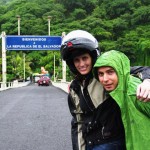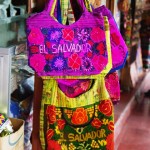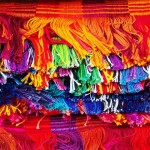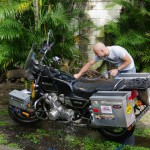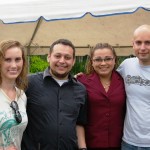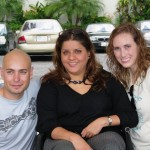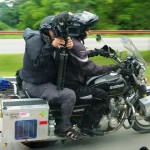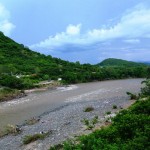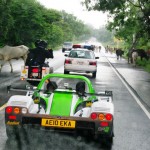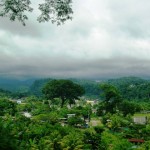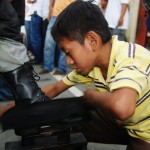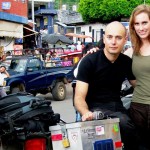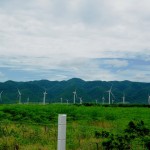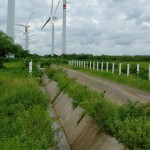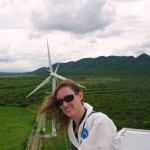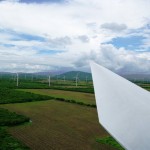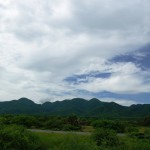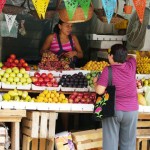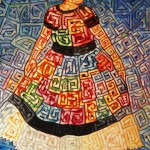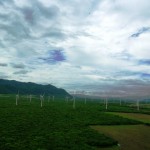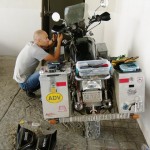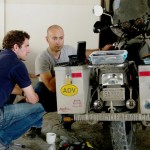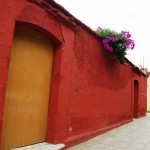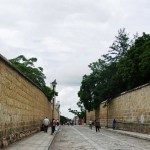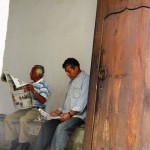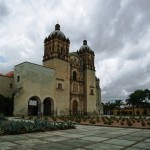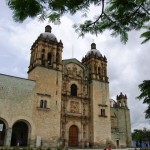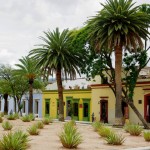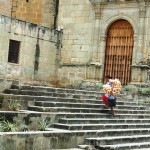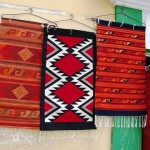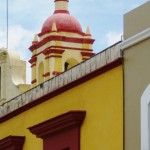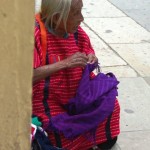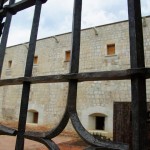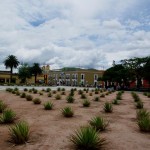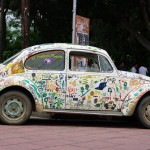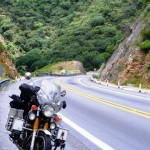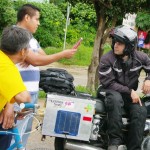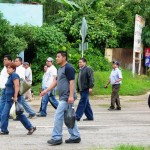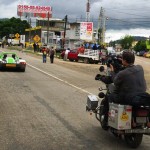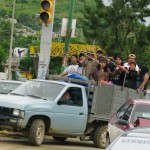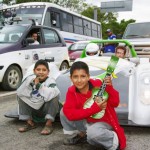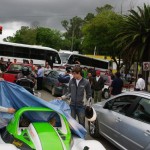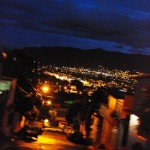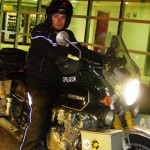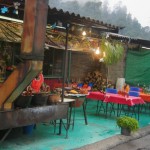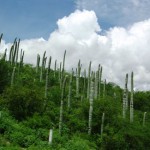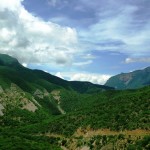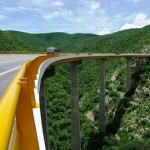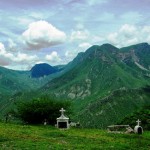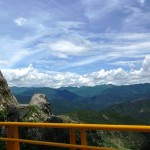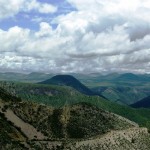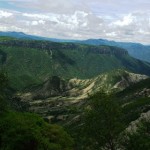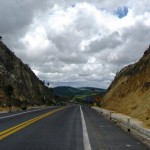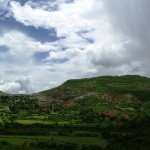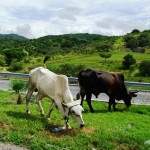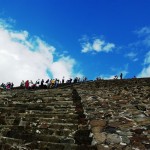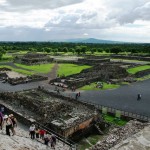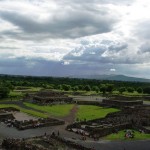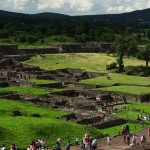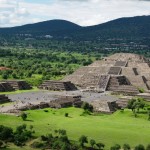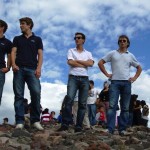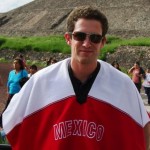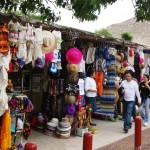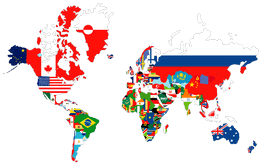October 30th, 2010 - El Salvador, Most Dangerous Country
I was still in recovery mode so Claudio took on the riding task with Cynthia going as pillion. I got lucky as the second they took off, the monstrous rain started again, and this time it rained so hard that small rivers started forming on the road. We left Guatemala prematurely and headed flying for the border of El Salvador. The border was pretty impressive. One side was Guatemala, other side El Salvador, and a raging river separated the two land masses. The border ordeal was a typical one lasting several hours. A million signatures, 200 copies of every document and at the end getting a license plate number wrong and having to do it all over again.
El Salvador is a different country and you can tell the second you pass over the border. Every house and I mean, literally, every house is protected with a tall fence plus broken glass and barbwire on top. Armed guards are everywhere, from gas stations to even a simple doctor’s office or pharmacy. Our hotel in San Salvador, the capital of El Salvador, had a guard with a chopped-off shotgun and a Glock, and this was a very good neighborhood to begin with. The capital city looked like an American colony with the only difference being the language. From Wal-Mart to Pizza Hut and Starbucks to Subway, the streets are filled with American brands and American- made cars. The currency is even the US dollar, and the government is rightly accused of being an American puppet.
El Salvador has one of the biggest gang problems in Latin America which is not surprising, and is home to the notorious Mara Salvatrucha (the MS-13 gang). It came out of a bloody civil war which took 13 years and left more than 75,000 dead on both sides of the conflict. Many families fled the country and the majority landed in the United States. Many El Salvadorians kids grew up in the US during the war and when they returned home (in most cases deported because of their criminal acts), they had nothing in common with the locals. These very same young men started their own US influenced gangs and started killing each other for lack of better things to do. Most of these gang members speak perfect English with an American accent and not so much Spanish and are covered in fierce tattoos from head to toe.
El Salvador, like Guatemala, struggles with food security and has one of the highest rates of chronic malnutrition in Central America. The problem starts with poverty and combined with a lack of education, creates a horrific result. To compound the situation, Latin Americans are mostly devout Catholic, and one thing the Catholic Church promotes and never condemns is having more babies.
In rural El Salvador the men are typically found passed out on hammocks outside of the shacks, while the women do every hard labor chore imaginable. These very same men take many women, and some have more than 12 children with no income to speak of. Women are forced to raise the kids on their own. The mothers are often malnourished themselves with no breast milk to speak of. Coffee and tortilla, the only two food staples at hand, are made into a mush to feed the babies. In three weeks, the babies are so sick and skinny that many of them die in the jungles before reaching their first month. The government figures of the fatality rate for children in El Salvador are inaccurate as most of these babies are born without ever having a birth certificate let alone a death certificate.
To make it worse, the malnutrition programs are run by the government and when admitted to the hospitals, eight out of ten babies will never make it out. The governmental hospitals typically only treat the presenting illness but do not treat malnutrition nor provide any education or help to the families.
While in San Salvador, we were hosted by a super nice Salvadorian family and they showed us the utmost hospitality. Claudia Aguirre and her father run the KMPG office in San Salvador. (KPMG is a global financial institution in a nutshell). They put us up in a hotel and drove us all around the town for our every need. Over the mealtime, when they found out that we are raising awareness for world hunger, they arranged for us to visit their friends who run a malnutrition clinic (the report on this visit will be in the next post). El Salvador is a beautiful country with wonderfully hospitable people. So far on the trip, El Salvador is the place that has felt most like home.

